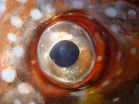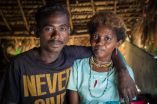(Press-News.org) Spider silk has long been noted for its graceful structure, as well as its advanced material properties: Ounce for ounce, it is stronger than steel.
MIT research has explained some of the material's mysteries, which could help design synthetic resources that mimic the extraordinary properties of natural silk. Now, scientists at MIT have developed a systematic approach to research its structure, blending computational modeling and mechanical analysis to 3D-print synthetic spider webs. These models offer insight into how spiders optimize their own webs.
"This is the first methodical exploration of its kind," says Professor Markus Buehler, head of MIT's Department of Civil and Environmental Engineering (CEE), and the lead author of a paper appearing this week in Nature Communications. "We are looking to expand our knowledge of the function of natural webs in a systematic and repeatable manner."
Coupling multiscale modeling with emerging microscale 3D-printing techniques, the team enabled a pathway to directly fabricate and test synthetic web structures by design. The lessons learned through this approach may help harness spider silk's strength for other uses, and ultimately inspire engineers to digitally design new structures and composites that are reliable and damage-resistant.
The paper was written by Buehler, along with CEE research scientist Zhao Qin, Harvard University professor Jennifer Lewis, and former Harvard postdoc Brett Compton.
Further unraveling the mysteries of spider silk
The study unearths a significant relationship between spider web structure, loading points, and failure mechanisms. By adjusting the material distribution throughout an entire web, a spider is able to optimize the web's strength for its anticipated prey.
The team, adopting an experimental setup, used metal structures to 3D-print synthetic webs, and directly integrate their data into models. "Ultimately we merged the physical with the computational in our experiments," Buehler says.
According to Buehler, spider webs employ a limited amount of material to capture prey of different sizes. He and his colleagues hope to use this work to design real-world, damage-resistant materials of lower density.
The 3D-printed models, Lewis says, open the door to studying the effects of web architecture on strength and damage tolerance -- a feat that would have been impossible to achieve using only natural spider webs.
"Spider silk is an impressive and fascinating material," she says. "But before now, the role of the web architecture had not yet been fully explored." To investigate the geometric aspects of spider webs through the use of a similar material to silk that can be 3D-printed with uniform mechanical properties was Lewis' mission.
Buehler's team used orb-weaver spider webs as the inspiration for their 3-D designs. In each of their samples, they controlled the diameter of the thread as a method of comparing homogeneous and heterogeneous thread thickness.
In simulation, the team created "the ideal environment to test and optimize the web structures" under different loading conditions, and then use synthetic materials to print identical webs, Qin says. "We are on the way to quantifying the mechanism that makes the spider's web so strong," he says.
The work revealed that spider webs consisting of uniform thread diameters are better suited to bear force applied at a single point, such as the impact coming from flies hitting webs; a nonuniform diameter can withstand more widespread pressure, such as from wind, rain, or gravity.
The combination of computational modeling and 3D-printing makes it possible to test and optimize designs efficiently.
Lewis says that the team now plans to examine the dynamic aspects of webs through controlled impact and vibration experiments. This, she says, will change the printed material's properties in real time, opening the door to printing optimized, multifunctional structures.
INFORMATION:
This news release is available in Spanish. The mission of neural stem cells located in the hippocampus, one of the main regions of the brain, is to generate new neurons during the adult life of mammals, including human beings, of course, and their function is to participate in certain types of learning and responses to anxiety and stress. Using an epilepsy model in genetically modified mice, the researchers have discovered that hippocampal neural stem cells stop generating new neurons and are turned into reactive astrocytes, a cell type that promotes inflammation and ...
A research team based at the University of Eastern Finland and the Turku Centre for Biotechnology have found new ways to block a pathway that may be responsible for several brain disorders, which could open the door to developing better treatments.
The protein NOS-1 generates nitric oxide, a chemical signal that is linked to neurological disorders from neurodegeneration, stroke and chronic pain sensitivity to anxiety and depressive disorders. These are now among the most common causes of disability and mortality, but decades of efforts have not led to a safe drug that ...
WASHINGTON, DC (May 15, 2015) -- More than half of popular probiotics contain traces of gluten, according to an analysis performed by investigators at the Celiac Disease Center at Columbia University Medical Center (CUMC). Tests on 22 top-selling probiotics revealed that 12 of them (or 55%) had detectable gluten.
Probiotics are commonly taken by patients for their theoretical effect in promoting gut health, though evidence of benefits is limited to a few clinical situations. "Many patients with celiac disease take dietary supplements, and probiotics are particularly popular," ...
SALT LAKE CITY, Utah, May 15, 2015 -- Myriad Genetics, Inc. (NASDAQ: MYGN) today presented clinical data for its Prolaris test at the 2015 American Urological Association (AUA) Annual Meeting being held May 15 to 19 in New Orleans, La. The results highlighted and underscored the significant ability of the Prolaris test to help physicians improve care for men diagnosed with prostate cancer.
In this pioneering study, Myriad presented important new clinical validation data that establishes an active surveillance (AS) threshold for men with localized prostate cancer. Specifically, ...
Research published today in the journal Analyst has demonstrated a new, noninvasive test that can detect cocaine use through a simple fingerprint. For the first time, this new fingerprint method can determine whether cocaine has been ingested, rather than just touched.
Led by the University of Surrey, a team of researchers from the Netherlands Forensic Institute (NL), the National Physical Laboratory (UK), King's College London (UK) and Sheffield Hallam University (UK), used different types of an analytical chemistry technique known as mass spectrometry to analyse the ...
Great Neck, NY - While the consequences of osteoporosis are worse in men than women - including death - older males are far less likely to take preventive measures against the potentially devastating bone-thinning disease or accept recommendations for screening, according to startling new research by North Shore-LIJ Health System geriatricians.
Geriatric fellow Irina Dashkova, MD, designed and led a cross-sectional survey of 146 older adults in New York and Florida that showed stunning gender differences in perspectives, beliefs and behaviors surrounding osteoporosis, ...
Great Neck, NY - With an aging Baby Boomer population and increasing numbers of childless and unmarried seniors, nearly one-quarter of Americans over age 65 are currently or at risk to become "elder orphans," a vulnerable group requiring greater awareness and advocacy efforts, according to new research by a North Shore-LIJ geriatrician and palliative care physician.
A case study and literature review by Maria Torroella Carney, MD, chief of geriatric and palliative medicine at the North Shore-LIJ Health System, zeroes in on staggering data on the prevalence and risks ...
Researchers at the University of Birmingham have shed new light on the relationship between autistic tendencies and psychosis proneness in neurotypical adults.
If a similar pattern were found in people diagnosed with these conditions, their findings would suggest that a co-occurrence of both conditions might balance, and diminish problems associated with perspective-taking difficulties.
The study, published in the journal Proceedings of the Royal Society B, indicates that while increased tendencies for either condition are associated with perspective-taking difficulties, ...
This news release is available in Japanese.
Though some large predatory fish, like tuna, have been shown to temporarily warm muscles or organs during pursuit, at least one fish may have done that one better by being able to internally generate heat that warms its heart and brain, a new study reports. This ability increases the fish's metabolic function in cold deep waters, and it shows that birds and mammals are not the only vertebrates with warm hearts. One thing that sets mammals and birds apart from vertebrates like fish is the ability to internally warm ...
This news release is available in Japanese.
Allowing both males and females in hunter-gatherer groups to choose their living companions reduces the number of family members in individual hunter-gatherer camps, a new study shows. The results answer a longstanding mystery about why hunter-gatherer populations have evolved to comprise large numbers of unrelated individuals, especially since hunter-gatherers have shown a strong preference to live with kin. Previously, studies have pointed to pair-bonding, or lifelong monogamous relationships in which couples go ...

